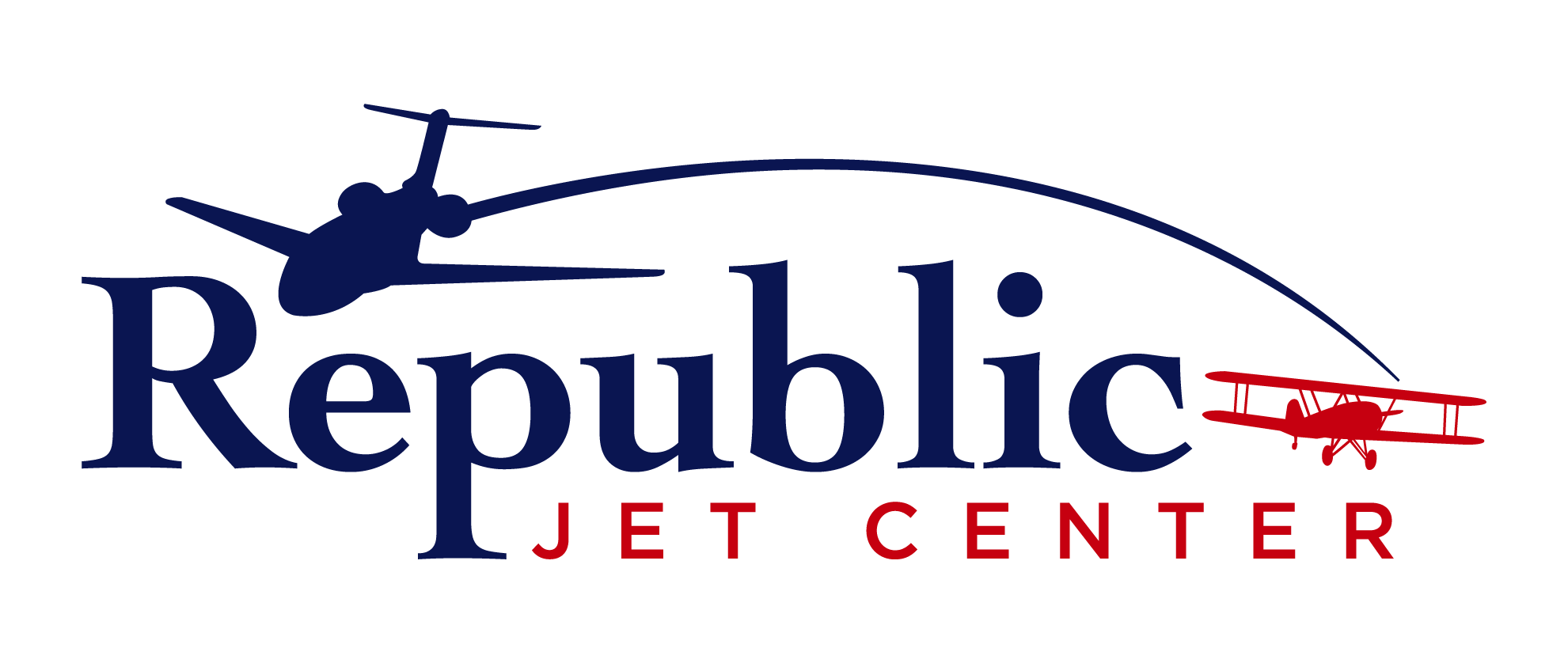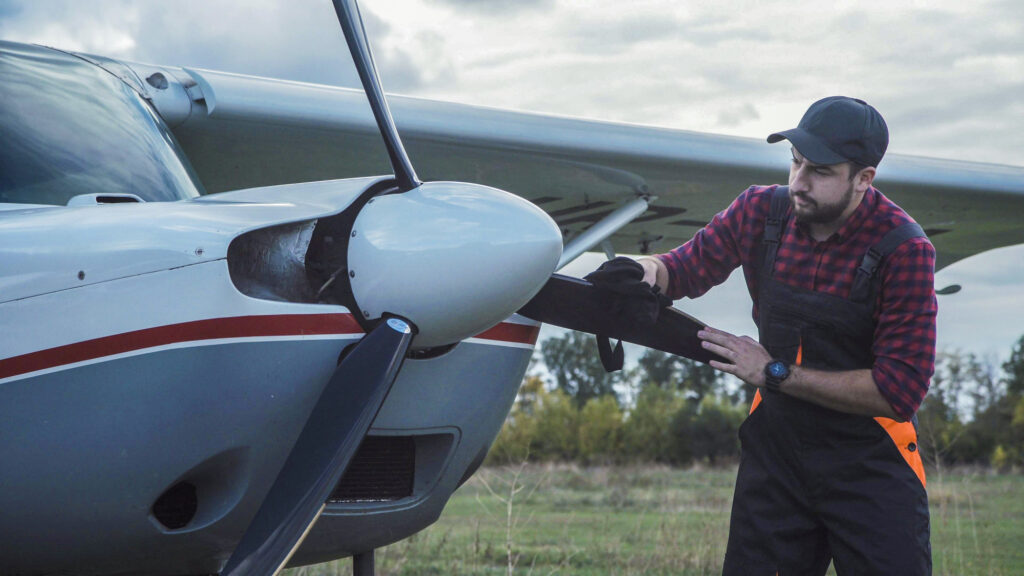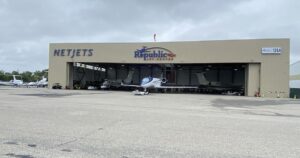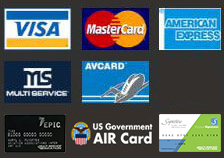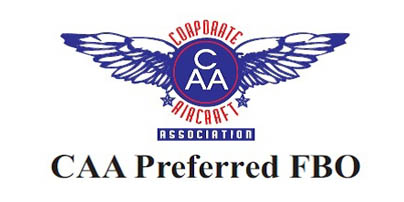The structural breakup and crash of Continental Express Flight 2574 in 1991 was a game-changer for the aviation industry.
Investigations following this tragic event resulted in some changes in the aviation industry. They effectively placed the Federal Aviation Authority in charge of airplane safety.
Since then the FAA has introduced stringent airplane inspection standards. These apply to both commercial and privately-owned airplanes.
As a private jet owner, you’re responsible for ensuring your plane complies with these FAA rules. Keep reading to find out more about aircraft inspection procedures and why they’re important for your private plane.
The Importance of Aircraft Inspections
Every airplane comprises millions of parts that all need to work together to keep it airborne.
Without regular inspections and maintenance, airplanes run less efficiently. This causes extensive wear on their parts and components which can lead to major problems down the line.
Inspection is an important part of maintaining your plane in peak condition. It keeps your passengers and crew safe and helps you avoid unnecessary repairs.
During an inspection, aircraft inspectors investigate every nook and cranny of your jet. In the process, they make important observations related to keeping it looking and operating at its best.
In some cases, pilots and technicians are responsible for inspections. They must perform these inspections according to FAA regulations, and the manufacturers’ guidelines.
More advanced inspections require the services of a qualified aircraft inspector.
Aviation Inspection Guidelines
Aircraft mechanics must stay up to date on FAA regulation updates published in service bulletins and press releases. These publications include all the latest legislation for airplane inspections.
Inspectors use the publications to guide and inform the inspection process and ensure compliance.
They also consult three other documents:
- The manufacturer’s manual contains basic instructions for the inspection
- Checklists help guide the inspection process
- Logbooks play a vital role in ensuring timely inspections
Pilots, mechanics, and technicians must keep accurate, detailed records of the inspection process.
This includes comprehensive notes of any necessary repairs. They should also document any airplane maintenance that’s related to the inspection.
The logbook ensures interested parties have access to an accurate overview of the plane’s status as required. This includes FAA inspectors.
Overview of Aircraft Inspections
Aviation inspections may involve little more than a cursory external walk-around inspection. Others include a complete teardown of the engine components.
As an example, sudden changes in oil pressure require a teardown inspection.
This means aircraft mechanics must disassemble the plane’s engine. Then, they need to check each component step by step to find the source of the problem and rectify it.
In some cases, technicians may use inspecting instruments. These allow an in-depth inspection of engine components in impossible-to-reach places. These instruments include:
Ultrasonic Instruments
Ultrasonic detection instruments are an excellent tool. They work best for detecting minute cracks or voids in engine components.
Engineers use them for field testing of the surface of some components. Alternatively, they can use them for inspecting parts coated with specialized detection fluids.
Borescopes
These instruments comprise a flexible tube attached to an eyepiece. This apparatus fits into small holes so inspectors can see the insides of various aircraft parts.
All kinds of inspections play a critical role in maintaining your private plane in an airworthy condition.
Different Kinds of Aviation Inspections
The FAA requires that fleet managers comply with the regulations set out in 14 CFR (Title 14 of the Code of Federal Regulations).
These inspections revolve around specific calendar dates. Some work on the number of flight hours between inspections.
Certain airplane components require specialized inspections outside the regular inspection time frames.
For instance, altimeters must undergo inspections no less than 24 months preceding a flight. Likewise, the FAA requires that you inspect transponders every 24 months.
The FAA mandates visual inspections for most airplane components.
The Pros and Cons of Visual Inspections
According to the ATA (Air Transport Administration), visual inspections involve thorough examinations of an airplane’s:
- zones
- systems
- subsystems
- components
- parts
Visual inspections aim to detect deterioration, damage, and structural failure to any of these things. The inspector may also recommend corrective maintenance.
Visual inspections are the fastest way to identify potential plane problems.
Accuracy and proficiency are vital for detecting these issues. Thus, inspections require the services of a highly trained and experienced inspector.
Human error is the single biggest risk of visual inspections.
Due to the complexities of airplane maintenance, these fixes can span several days and multiple personnel. This further compounds the potential for mistakes.
Technological advances mean robots may soon replace humans during aircraft inspections. This should help eliminate the risks.
According to the FAA rules, airplanes require three primary types of inspections. These are:
Annual Inspections
Annual inspections are routine checks applicable to all aircraft. They’re the most in-depth inspections, involving all the components of the inspections mentioned below.
The following instances exclude planes from undergoing annual inspections:
- A valid progressive inspection plan
- A special permit
- An Experimental certificate
- Provisional airworthiness certification
A mechanic with inspection authorization (IA) must sign off on all annual inspections. You can’t fly your jet without this sign-off unless you get special permission from your local Flight Standards District Office.
In most cases, this only applies if your plane is outside its prescribed inspection period, and you need to move it to another facility.
Pilots may request permission from the FSDO to perform progressive inspections instead of annual inspections.
Progressive Inspections
Progressive inspections allow pilots to conduct some segments of the annual inspection overnight. Instead of spending 100 hours on a single bout of inspections, you can divide the work into four phases of 25 hours each.
This helps limit the loss of revenue due to the amount of downtime required for an annual inspection.
Only select applicants may apply for a progressive inspection. Pilots must apply to the Flight Standards District Office for this concession.
Their application should include appropriate documentation and a suggested maintenance plan in accordance with manufacturer standards.
These programs allow for checks of aircraft components at fixed intervals, according to the approved maintenance plan.
Progressive inspection works best for jet owners with high-usage airplanes, such as corporate fleets and flight school planes.
You can’t transfer your progressive inspection plan to the new owner when you sell a private jet. They must go through the approval process from scratch again.
The FSDO must endorse the new maintenance plan within a year of the last completed maintenance cycle.
100-Hour Inspections
The FAA mandates these inspection criteria for all airplanes that carry people in exchange for a fee. Flight instructors offering instruction must also comply.
Services like aerial photography also fall into this category. If a student of a flight school has their own plane, it isn’t subject to this inspection.
The rule only applies to airplanes belonging to the person hiring it out for income.
FAR 91.409 applies to these inspections.
An aircraft may go over the time limit for its 1400-hour inspection by 10 hours if it needs to fly to another location for the inspection to proceed. In this case, the extra ten hours form part of the next 100 hours of service.
These are some common checks performed during this lengthy routine procedure:
Altimeter
Inspectors must evaluate and test every aspect of this important component. A faulty altimeter can cause deviation from the airplane’s cleared altitude and result in a collision with another airplane or the ground.
Transponder
The transponder allows air traffic controllers to keep track of the airplane to ensure a safe landing.
A faulty transponder may lead to a collision with another airplane due to ineffective coordination by ground control personnel. It may also create an electrical short and start a cockpit fire.
All transponders require inspection every 24 months. You can’t use a new transponder in your airplane unless it’s cleared by an authorized inspector first.
Emergency Locator Transmitter
While most airplanes never get to use this piece of equipment it’s one of the most important things on board. This device engages in the event of a crash to notify rescue parties about the plane’s location.
Finding the aircraft and beginning the recovery process quickly has a major impact on the survival rate of the occupants.
The ELT must undergo frequent tests to verify its signal strength, and have a full inspection every 12 months. Test requirements include thorough checks of the following:
- Battery corrosion levels
- Control functions
- Crash sensors
- Signal strength
The above three items are the most critical elements to ensure safety in the air. Several other components can affect your plane’s safety.
Fuselage, Hull, Wings, and Empennage
These inspections involve inspecting the skin and fabric of these components for the following:
- loose fittings
- failures
- deterioration
The inspector will also check that all the systems are correctly installed and functioning properly.
Defects in the exterior components of an airplane can cause the plane to respond poorly to the controls and potentially veer off course.
Engine and Nacelle
There’s no need to stress the devastating effect that airplane engine failure may cause. An aviation inspector conducts a comprehensive check of the airplane engine to detect the following:
- Oil, fuel, and hydraulic fluid leaks
- Faulty cylinder compression levels
- Screen debris
- Ineffective sump drain plugs
They also look for damage and deterioration in the dampeners, and defects and cracks in the cowling, engine mount, and exhaust.
Finally, they inspect the engine for loose or missing nuts. studs, hoses, and fittings.
Cabin and Cockpit
Areas of focus in the cabin and cockpit include:
- Damaged seats and safety belts
- Cracked or poorly sealed windows
- Loose equipment and tools
- Faded markings or faulty mounting on controls and instruments
- Non-functional controls and instruments
- Old, improperly mounted batteries
These things contribute to the comfort of the passengers, crew, and pilot and ensure their safety, too. For instance, improperly sealed windows can affect the pressurization of the cabin and make it difficult to breathe inside the plane.
Radio and Electronic Equipment
Without fully functional radio and electronic equipment, the pilot is essentially flying blind. Inspectors must ensure these items are properly mounted and fully functional.
They also check the condition, mounting, and operation of the antennas that facilitate the proper operation of these technologies.
Propeller Assembly
Propellers should have sufficient binding and have no cracks or excess oil, and secure, safe bolts. Inspectors also check the integrity, mounting, and operation of the anti-icing and control systems on the propellers.
Landing Gear
If an airplane’s landing gear fails, the pilot will have to perform a gear-up or belly landing.
These types of landings cause damage to the underside of the plane. They may cause it to flip or set alight if it strikes the ground too hard.
Nobody wants to run these risks, so inspectors check the landing gear thoroughly for wear and tear to make sure it’s working perfectly. They’ll inspect the tires for signs that indicate it’s time for a tire change, and search for leaks in the hydraulic lines.
Pre- and Post-Flight Aircraft Inspection
These cursory checks involve little more than a pre-flight walk around before taking off and after landing. The pilot also reads all the relevant maintenance documents for the plane and checks its airworthiness documents.
If they notice anything suspicious, they will report it to the aircraft maintenance crew and delay take-off. Once the maintenance team has resolved the issue, the plane can get underway.
Take the Hassle Out of Jet Ownership
One way to fulfill your responsibilities as a private jet owner is by placing your jet in the capable hands of an approved FBO.
Republic Jet Center is New York’s premier FBO service. We offer state-of-the-art aircraft storage, inspection, and maintenance facilities.
Browse our blog for more information on private jet travel and ownership, or get in touch for assistance.
